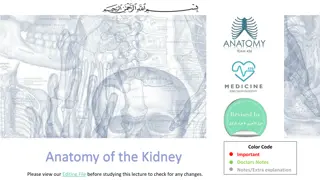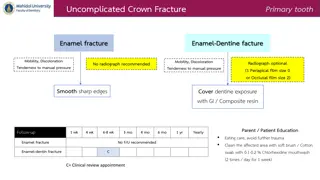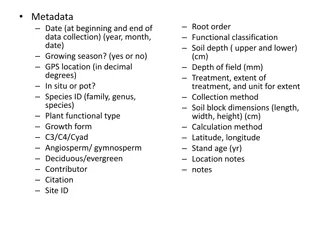Root Anatomy and Functions
The root system of plants consists of primary and secondary roots made up of dermal, vascular, and ground tissues. Roots play a crucial role in absorbing water and minerals, providing support, anchoring the plant, and storing food. Taproots and fibrous roots are two common types, each serving unique functions such as straight downward growth or energy storage. They work to anchor the plant in the soil while absorbing essential nutrients for plant growth.
Download Presentation

Please find below an Image/Link to download the presentation.
The content on the website is provided AS IS for your information and personal use only. It may not be sold, licensed, or shared on other websites without obtaining consent from the author.If you encounter any issues during the download, it is possible that the publisher has removed the file from their server.
You are allowed to download the files provided on this website for personal or commercial use, subject to the condition that they are used lawfully. All files are the property of their respective owners.
The content on the website is provided AS IS for your information and personal use only. It may not be sold, licensed, or shared on other websites without obtaining consent from the author.
E N D
Presentation Transcript
Root Anatomy and Functions
ROOTS Root system consists of primary and secondary roots. The root is made up of dermal, vascular, and ground tissues. Roots absorb water and minerals and transport them to stems. They anchor and support a plant, and store food.
Parts of a root Primary root = Taproot
Fibrous Root Taproot Straight root that grows vertically downward. Branched root that arises from the base of the stem
Food Storage Roots can store some of the energy created by plants during photosynthesis. Energy becomes available as the plant needs it. (Taproots or root vegetables)
Roots work to anchor the plant to the ground Roots also absorb water and minerals for the plant from the soil























